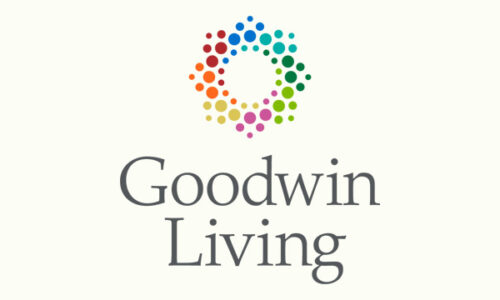Diversity Equity Inclusion & Belonging
March 19, 2025
Nowruz (Persian New Year)
by Daniel Keiper (he/his), GHA Assistant Director of Dining Services
In 2022, I was in Iran and privileged to welcome in the year 1401 on the Persian calendar. On our U.S. calendars, Persian New Year – or Nowruz – falls on March 21, the first day of spring. In reality, the Nowruz celebrations last for a 13-day period.
In Farsi (Persian), Nowruz literally means “new day” and originated in ancient Zoroastrian tradition. Although Nowruz is rooted in the Zoroastrian religion, Nowruz is so deeply embedded in Persian culture that the leaders of Iran’s current Islamic Republic have not tried to suppress this tradition, even as they instituted many laws and regulations to align the practices of Iranian citizens more closely with Islamic customs.
The most common feature of the celebration of Nowruz is the Haft-sin table. I saw this in every household I visited and in many public spaces. Haft-sin (which means “seven S’s in Farsi) always includes seven specific items that begin with the letter “sin” (or S) in the Persian alphabet. The tables often included grass grown in a small dish (sabzeh), apples (seeb), sumac (a spice), sweet pudding (samanu), garlic (seer), a bowl of vinegar (serekh) and dried fruit (senjed). Almost every Haft-sin table I saw also featured a live goldfish in a bowl. One sees these goldfish for sale everywhere around town.
Every evening during the Nowruz celebration period, my wife and I would visit the home of one of her two brothers, six sisters and assorted nieces and nephews. Because hospitality is such a large part of Persian culture, every evening was elaborate. A (very) thorough spring cleaning is also a big part of the Nowruz tradition. Everyone’s home looked beautiful inside. It’s definitely a different world inside the home, as opposed to the public-facing outside.
Each evening proceeded in similar fashion. Shoes were left outside the door. Hosts greeted each and every guest very formally (even those like me who speak limited Farsi) and offered a seat. Each family group that arrived subsequently went around the room and greeted everyone else who was already there. Everyone was offered a selection from a bowl of fruit as well as tea. There was a long period of visiting and conversation before anyone even thought to serve the meal. Eventually, a long plastic runner was put down on the floor. Everyone sat around it (this is easier said than done once you’re in your 60s) and the food was served family style, with everyone passing platters around and politely insisting that one partakes of more. It generally takes at least two tries to turn down an item, as the first “no, thank you” is assumed to be just a formality (ta’aroof).
Surprisingly to me, conversation seemed to grind to a halt once the food was out, as everyone focused on the meal. Once guests appeared to be satisfied, the women picked up the dishes, glasses, silverware, etc. Since I have spent my entire career in food service, my natural inclination is always to pitch in. Every time I tried to help clean up, I was admonished. As a man and as a guest, this is definitely not seen as an appropriate role for me. Ironically, though, the oldest son of the household is always responsible for rolling up the runner and collecting any crumbs that are left. As a food service professional, I was always amazed at how quickly and efficiently the dishes were done and the leftovers packed away in such relatively small, cramped kitchens. Huge meals seemed to appear out of nowhere and disappear just as quickly.
Nobody ate and ran. After dinner, conversation generally continued for another one to two hours. It was generally around midnight before anyone felt comfortable making a departure. Again, everyone (and the groups are often 25 – 30 persons) said good night (sheb beher) and goodbye (Khooda Hafez) to everyone else. I had the experience of someone getting missed during greetings and/or farewells, and although everyone was too polite to point this out, it can be taken as a sign of disrespect. The culture of hospitality includes a lot of formality and ritual.
Bonfires are also a big part of Nowruz celebrations. In large, open public areas, I saw massive bonfires with large groups of (generally young) people gathered around. In families’ backyards, though, there were often very small fires set up at intervals. The custom is to jump over a series of these small fires to symbolically cleanse oneself from the old year and embrace the health of the new year. Quite honestly, though, it’s just a lot of fun.
Depending on how liberal or conservative the host family is, there may be music and modest dancing after the bonfires. It’s often the women dancing as one group and the men dancing in their own group. My wife has family members who are extremely liberal-minded and also those who are strictly conservative in practice, so we enjoyed this part of the evening amongst some groups and abstained amongst others.
The final day, the thirteenth day of Nowruz, is called “sizdah bedah” and it is traditionally a day for outdoor picnicking. I witnessed groups picnicking in obvious places (parks) and not so obvious (open spaces along highways, or really anywhere there is an available small spot of grass). This is also the day when items from the Haft-sin table are ritually discarded. Sadly, the goldfish often don’t seem to survive the thirteen days.
While in the United States, New Year’s Eve and New Year’s Day are often used as an opportunity for excess. My experience of Persian New Year in Iran was one of a supreme display of welcoming and hospitality. Also, and this would entail another essay in itself, the food is amazing!
_____________________________
Goodwin Living DEIB Committee: Statement of Purpose: Educate, Embrace and Empower team members, residents, members* and all served by Goodwin Living to support Diversity, Equity, Inclusion and Belonging.
Goodwin Living DEIB Committee Desired Outcome: The Diversity, Equity, Inclusion and Belonging Committee (DEIB) will seek open and honest communication and collaboration that will inform and celebrate the age, culture, ethnicity and sexual orientation of team members, residents, members* and all served by Goodwin Living without bias.
*Members include Priority Club members and Goodwin Living at Home.
Questions or comments? Please contact us DEIB@GoodwinLiving.org





